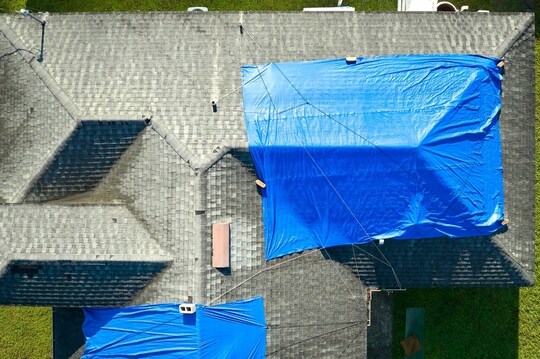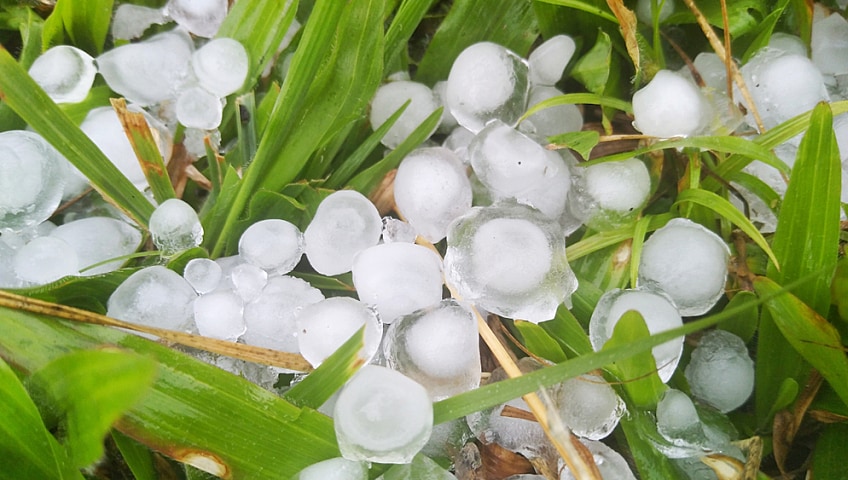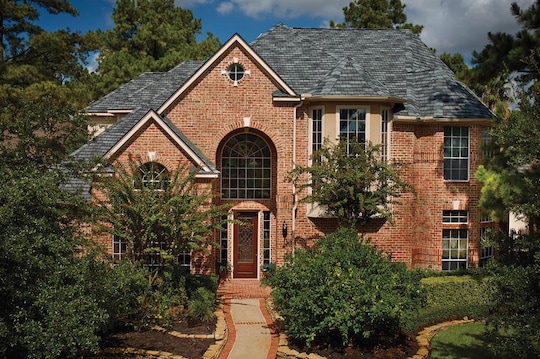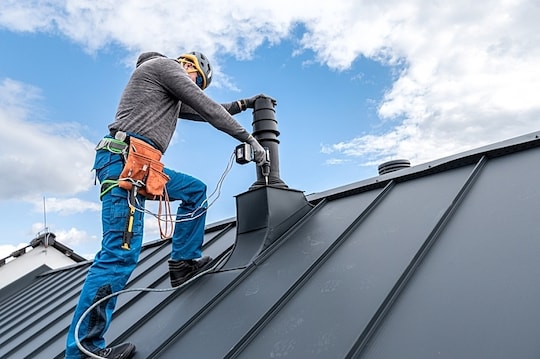
Have you experienced roof damage from hail? With 5 392 recorded hail storms in 2019, it's possible some of these heavy-hitting ice balls have impacted your property recently or in the past.
Hail storms and high winds can damage your roof. Know how to identify hail damage and what steps to take after hail hits.
How to Identify Damage to Your Roof
After a hail storm, you'll want to take quick action to see if there's any roof damage from hail. When it's safe to go outside, grab your camera and take snapshots of any remaining hail balls. These photos can be helpful if you end up filing an insurance claim. You can use a tape measure to show hail size.
Next, it's time to search for any visible hail damage from inside and around your home. Be sure to take pictures of any hail damage you see. Start inside your attic, then walk around the exterior of your house, and finally, use binoculars to view your roof. Leave it to the pros to climb on your roof as it can be dangerous to do so yourself.
Inside the House
A walk through the house may reveal signs of hail damage. Look for issues such as:
- Dents or cracks in skylights
- Visible damage in the attic ceiling, such as cracks in plywood, wet spots, or sagging
Outside the House
Inspect your home's exterior to help gauge what might be happening on your roof. For example, if your siding is damaged from hail, there's a good chance your roof suffered too. Look for trouble spots like:
- Dents in gutters or downspouts
- Dents in siding or window sills
- Damage to the air conditioner
- Hail damage to your deck
Ground View of Roof
Climbing up on a slippery, post-storm roof without the proper safety equipment can lead to accidents. That's why rooftop inspections are best left to the pros, especially after hail hits. Instead, use binoculars to inspect your roof from the ground. Look for visible signs of hail damage such as:
- Dings or dents in roofing vents
- Variation in shingle colors that look like bruising-this may be due to granule loss caused by hail. Granule loss is more than a cosmetic issue, as it can lead to premature shingle aging.
- Visible indentations in shingles or areas where the granules look scuffed/removed
- Missing, loose, or cracked shingles
- Solin courbé ou détaché
Take Action Around Hail Damage
If you suspect you may have roof damage, contact a roofing contractor to provide a roof inspection. Remember, not all hail damage is visible.
If you have reason to suspect hail damage but can't see any major problems, consider enlisting the help of a professional contractor to identify latent damage.
Find a local GAF-factory certified roofing contractor* to come out to assess the extent of the damage for you.
Insurance Claims
Many insurance companies provide coverage for hail damage to your roof. Review your policy to understand your coverage, restrictions, and deductible. If you plan to file a claim with your insurance company, it's important to contact the company promptly and follow their procedure for filing a claim.
Keep Your Roof Damage-Free
In need of reliable hail storm information? Visit Through the Storm, a helpful resource hub for homeowners impacted by a storm. You can use the Handy Steps to Storm Restoration guide to ensure you take appropriate steps to repair the damage and protect your home.
*Les entrepreneurs inscrits aux programmes de certification GAF ne sont pas des employés ou des agents de GAF, qui ne contrôle pas et ne supervise pas ces entreprises indépendantes. Les entrepreneurs peuvent recevoir des avantages, tels que des points de fidélité et des remises sur les outils de marketing de GAF pour avoir participé au programme et offert des garanties améliorées GAF, qui exigent l'utilisation d'une quantité minimale de produits de la marque.



